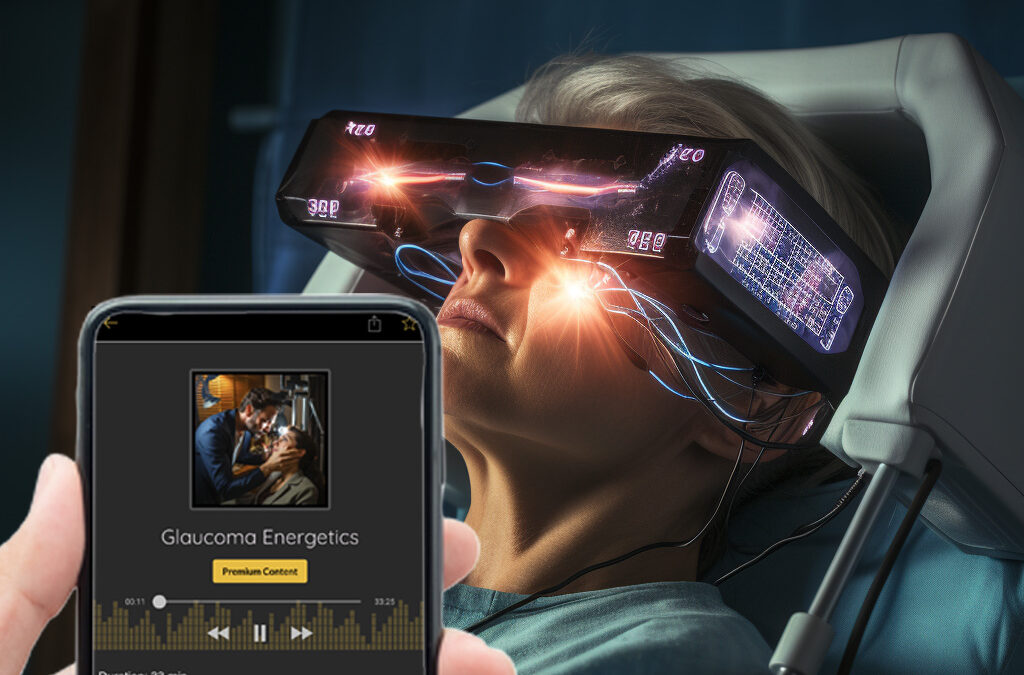Glaucoma is a prevalent and potentially blinding eye condition characterized by progressive damage to the optic nerve, often due to increased intraocular pressure (IOP). It is the leading cause of irreversible blindness worldwide. Despite the availability of various treatment options, the search for innovative and effective therapies to manage glaucoma continues.
One such therapy that has gained attention in recent years is the use of Pulsed Electromagnetic Fields (PEMF). PEMF involves the application of a non-invasive electromagnetic field to the affected area, with the potential to stimulate various cellular processes. The use of PEMF for treating various medical conditions has been investigated, and its influence on the hemodynamics of the eye in open-angle glaucoma has been studied at the Filatov Institute.
The specific PEMF characteristics used in the study were as follows: impulse frequency of 50 Hz, an exposition time of 0.02 seconds, square impulse shape, a rate of impulse rise of 4.10(4) c, a rate of magnetic induction rise of 2.10(4) mT/c, and an amplitude value of magnetic induction at the impulse height ranging from 9.0 to 8.5 mT. The duration of each PEMF procedure was 7 minutes, and the course consisted of 10 sessions.
To evaluate the effects of PEMF on glaucomatous eyes, the study observed 150 patients with glaucoma (283 eyes) in various stages of the disease, including latent, initial, and advanced glaucoma. The results showed a positive influence of PEMF on the hemodynamics of glaucomatous eyes. Specifically, there was a significant rise in the rheographic coefficient and relative volume pulse by 87.99% and 81.63%, respectively, indicating improved blood flow in the ocular vessels.
Remarkably, the study found that the degree of improvement and restoration of rheographic values to the age norm were more pronounced at the initial stages of glaucoma (latent and initial glaucoma). This observation suggests that early intervention with PEMF may hold the most promise in managing glaucomatous hemodynamics.

PEMF Healing app FREE DOWNLOAD
The mechanism by which PEMF exerts its positive effects on ocular blood flow in glaucoma is not entirely understood. Still, it is hypothesized that the electromagnetic field stimulation may improve microcirculation, enhance vascular endothelial function, and reduce intraocular pressure, thereby promoting better blood perfusion to the optic nerve head and surrounding tissues.
It is important to note that while the results of this study are encouraging, further research is necessary to validate the findings and establish PEMF as a mainstream therapeutic modality for glaucoma management. Larger randomized controlled trials, long-term follow-up studies, and investigations into the optimal PEMF parameters are required to assess the safety, efficacy, and ideal treatment protocols.
Additionally, the study’s reliance on a single device and set of PEMF characteristics should be taken into account. Different PEMF devices and parameters might yield varying results, necessitating a comprehensive evaluation of various PEMF approaches.
In conclusion, the study conducted at the Filatov Institute offers promising insights into the potential benefits of using PEMF to improve the hemodynamics of eyes affected by glaucoma. The observed rise in rheographic coefficient and relative volume pulse indicates improved blood flow in glaucomatous eyes, particularly at the early stages of the disease. However, further investigation and clinical trials are essential to establish the role of PEMF as a standard treatment option for glaucoma and to determine its long-term effects on ocular health and visual function. As research in this field continues to progress, it may pave the way for innovative and non-invasive therapeutic strategies to manage glaucoma effectively.

